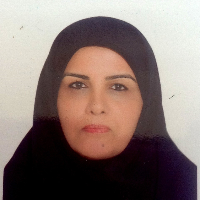Spatial Resilience In Traditional Bazaars; Case study: Esfahan Qeisariye Bazaar
Author(s):
Abstract:
Resilience in urbanization is a novel concept that has been globally concerned since the early 1990s. At the beginning, this concept had merely an ecological viewpoint; however, over time it has gradually been developed, and the other aspects and issues in terms of urban societies such as social, economical and so on has been considered. One of the important aspects of resiliency is spatial resiliency that is the continuing of the existence of urban spaces while preserving their identity during different variations. In the historical study of urban spaces, their different degrees of life, in other words, the difference degree in their resiliency is concerned. Therefore, this question rises that what factors influence the resiliency of an urban space? On the other hand, one of the types of urban spaces that despite its various environmental changes and crises throughout its history has desirably continued its life is the traditional bazaar. So this question is posed that what factors have led to the resiliency of traditional bazaars over a long period of time?. In this regard, the present study aiming to answer the proposed questions, especially in the case study of the Qeisariye bazaar of Isfahan, attempts to address the factors that have caused this urban space being resilient. The methodology is qualitative based on considering case study and content analysis and descriptive-analytical approach. First, by using deductive reasoning method and referring to authentic resources, two social and physical factors are introduced as indicators of the conceptual model of spatial resilience. Then, the indicators of the spatial resilience model related to the Isfahans Qeisariye Bazaar were extracted by examining the case study of research and content analysis of the interviews concerning the reasons for using this place in order to scrutinize the effective factors in constant use of the case study. The brief results of this research indicate that the flexible and robust construction of the bazaar, with its constant protection and restoration along with diverse uses, unique identity of space, environmental comfort and beauty in the space, access to the various spaces and uses of this space, and belonging to the place in the Qeisariye Bazaar of Isfahan has led to the spatial evolution of this historical urban space.
Keywords:
Language:
Persian
Published:
Bagh-e Nazar, Volume:14 Issue: 52, 2017
Pages:
49 to 58
magiran.com/p1748163
دانلود و مطالعه متن این مقاله با یکی از روشهای زیر امکان پذیر است:
اشتراک شخصی
با عضویت و پرداخت آنلاین حق اشتراک یکساله به مبلغ 1,390,000ريال میتوانید 70 عنوان مطلب دانلود کنید!
اشتراک سازمانی
به کتابخانه دانشگاه یا محل کار خود پیشنهاد کنید تا اشتراک سازمانی این پایگاه را برای دسترسی نامحدود همه کاربران به متن مطالب تهیه نمایند!
توجه!
- حق عضویت دریافتی صرف حمایت از نشریات عضو و نگهداری، تکمیل و توسعه مگیران میشود.
- پرداخت حق اشتراک و دانلود مقالات اجازه بازنشر آن در سایر رسانههای چاپی و دیجیتال را به کاربر نمیدهد.
In order to view content subscription is required
Personal subscription
Subscribe magiran.com for 70 € euros via PayPal and download 70 articles during a year.
Organization subscription
Please contact us to subscribe your university or library for unlimited access!



